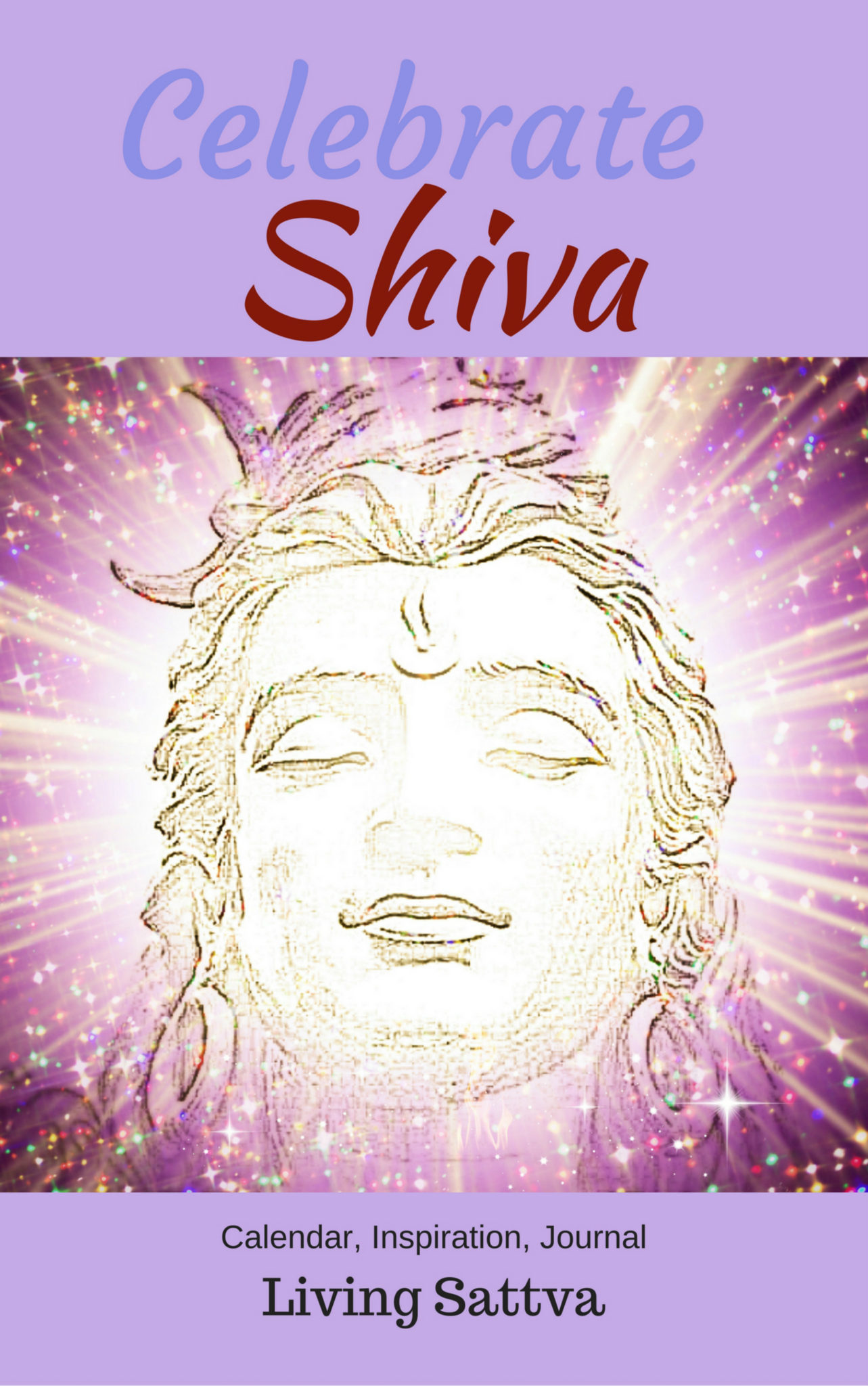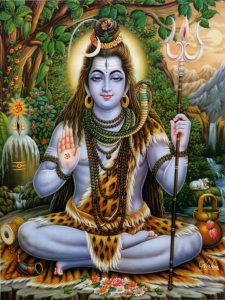Sattvic lifestyle is embedded in a life positive and celebratory framework. Celebrations on the Earth mirror celestial events such as the movement of the sun, the stars, eclipses, and phases of the moon. Embedded in this sattvic lifestyle is also a whole day to celebrate darkness and finding the light!
At the physiological level, the body supports the darkness by producing hormones that help us sleep. The cycle of light and dark helps us be active in hours with daylight and sleep when it is dark. The darkness and light cycle also serves to restrict specific activities to different times of the day. The night provides privacy for intimate activities. Celebrating both the dark and light helps one lead a fulfilled life.
In nature, many flowers such as Jasmine, Parijatham, Brahma Kamal blossom only at night. Many animals like bats, loris, and lions are active at night, rarely coming out in the daytime. These plants and animals showcase new aspects of nature and deepen our appreciation for the abundance of life around us.
For humans, darkness is generally linked with activities incite fear and shame. It brings out the fear of inciting beasts that cannot tolerate light and roam during the daylight hours. All suppressed energies and lower energies become active in the darkness. Sometimes physical pain leads us to develop dependencies to handle the pain. That, too, creates a sense of sadness. We also tend to create our own darkness with confusion, complications with our cognitions, and embrace powerlessness.
Sages who meditated on Shiva and guided humans have provided a way for conquering darkness using darkness. As a proverb says, to remove a thorn, you need another thorn. Darkness is not a void. Instead, it is filled with infinite potential. It is the time filled with the undifferentiated energy of mother Kaali and Shiva. Connecting with the power can bring the transformation of a person. There can be no fear when there is so much energy. Shame or confusion does not exist where there is an attitude of surrender to the divine.
Mahashivaratri is all about conquering darkness by connecting to Shiva in the dark, for He is darkness, just as he is the light. Darkness is simply the absence of light. To drive away the darkness, we only need to invite light. Shiva in Tiruvannamalai, Arunachaleshwara, is a shaft of light! Mere remembrance of Shiva drives away the darkness. The meditation, celebrations throughout the night gradually melts away all the darkness.
Simple celebrations for Mahashivaratri include recognizing the darkness is not a blanket but happening in phases. Traditional Mahashivartri celebrations begin with the onset of Chaturdashi Tithi, Krishna Paksha, Magha Masam, or Phalguna month. It is the celebration of the convergence of Shiva and Shakti.
Everybody celebrates Mahashivaratri Yeta Shakti, which means, as much as one is capable or able. Some practices are followed by all devotees of Shiva on this day include fasting, worship, and celebrating Shiva. Mahashivaratri is one of the few festivals where food takes the backseat. In fact, devotees fast to receive initiation from their Gurus and from Shiva himself. On this day, Shiva and Shakti bless every devotee with ultimate liberation, invite them to Kailaasa, irrespective of their previous deeds. Below are two stories that depict how Shiva Shakti blessed the devotees.
A long time ago, a blind prostitute begged for food near the temple. Every day she received some food, and she could appease her hunger. On Mahashivaratri day, however, she did not get anything from devotees except bilva leaves. She washed the bilva leaves, and when she chewed them, it was bitter and fibrous. Frustrated, she wandered away from the path and went to a secluded area, hoping to find food there. Here she found some flowers, but more bilva leaves. Frustrated, she poured the water and threw the bilva leaves in the direction where she had found flowers. Little did she know that she had performed abhishekam to Shiva lingam and offered bilva leaves. It is said that Shiva and Shakti accepted this worship, and she attained moksha at the end of her life.
Another story recalls how Lord Shiva protected his devotee by worshiping with bilva leaves. A hunter lost his way in the forest. As the night fell, he heard a tiger growl close by, causing him to scurry up the nearest tree. The prowling tigers at the base of the tree did not allow him to descend the tree. To keep himself awake, and hopefully scare the tiger, he spoke softly to himself, plucked the leaves from the tree and dropped it below. Little did he know that he was on a bilva tree, and he had worshiped Lord Shiva in the form of Shiva Lingam below him. Although the tree was not exceedingly tall and the tiger could have jumped and grabbed him quickly, it was a puzzle that it did not. The devotee attributed the miraculous save to the blessing of Lord Shiva.
On the Shivaratri day, after bathing early in the morning, devotees declare their intentions or Sankalpa to the divine. If you want to observe a full day fast on Shivaratri and eat only the next day, say the Sankalpa and seek divine blessings to make it happen without obstacles. Here is more information regarding upavasa or fasting. Many devotees eat only wheat-based food such as roti or puri in the afternoon. Whatever one decides to do, it should be declared and humbly seek the blessing of self-determination to successfully complete the pledge and declaration.
In the evening, devotees take another bath before doing Shiva puja at home or visiting Shiva temple. Puja at night is offered once or in 4 kaalas or prahara. Here are the critical time and dates for the east coast in the USA. Check with your local temple for Puja timings.
Mahashivaratri on Friday, February 21, 2020
Puja Time – 11:48 PM to 12:40 AM, Feb 22
Offer First Prahar Puja between- 05:39 PM to 08:56 PM Feb 21
Offer Second Prahar Puja between- 08:56 PM to 12:14 AM, Feb 22
Offer Third Prahar Puja between- 12:14 AM to 03:32 AM, Feb 22
Offer Fourth Prahar Puja between- 03:32 AM to 06:49 AM, Feb 22
Chaturdashi Tithi Begins – 06:50 AM on Feb 21, 2020
Feb 22nd Shivaratri Parana Time – 06:49 AM to 08:32 AM
Chaturdashi Tithi Ends – 08:32 AM on Feb 22, 2020
Devotees who are fasting will end their past before the end of Chaturdashi Tithi, after the morning Puja.
If you have an Atmalinga or Sri Meru or Sri Chakra yantra, you can offer worship by Abhishekam and chanting. Here are some chants you can play or chant when you offer Abhishekam.
- Mantras to chant—
- Shiva Gayathri Mantra: https://youtu.be/ytV08faCJwg
- Mahamrityunjaya Mantra https://youtu.be/72WfEUZ2evs
- Shiva Panchakshari: https://youtu.be/05c7SkvFY_o
- Shiva Mantra Ghanapaatha: https://youtu.be/dPm7cd5M674
- Sri Rudram,Namakam, Chamakam: https://youtu.be/aUrGf5EX96s
- Traditional lyrics for Kirtan/dance—
- Traditional Gummi dance- whirling and clapping dance: https://youtu.be/CrI11kXB0E4
- Nataraja’s Song: https://youtu.be/iLHOFCEBKIU
- Dam Dama Damaru bajaune: https://youtu.be/9qyfYDFsXCw
- Om Mahapraaana Deepam: https://youtu.be/1lPozjD-WJA
- Shivayanama: https://youtu.be/1BT9ntm26Hg
- Some popular compositions on Shiva—
- Shiva Shambo Shambo: https://youtu.be/j1yRP4AkdSo
- Bho Shambo: https://youtu.be/KBSY4M91sGc
- Shivaya Parameshwaraya: https://youtu.be/aCOO9m9BWdE
- Shambo Mahadeva: https://youtu.be/DGGW0m-LnBY
- En Appan Allava: https://youtu.be/mrch2SnQbz8
- Some favorites—
- Tiruvasagam: https://youtu.be/-IsgjxYy-9Q
- Thevaram/ Thirumurai song: https://youtu.be/1cG_UXS4Oeo
- Sri Shiva Aksharanamamalai: https://youtu.be/FiUtUNxzXWY
- Dwadasha Jyothirlinga Stotram: https://youtu.be/5AxUZfXC5JQ
- Lingashatakam: https://youtu.be/3G3e1UCK-5w
- Bilvashtakam: https://youtu.be/pyTqMY-MJOI
For Abhishekam, which is a hydration ceremony, offer fresh, organic ingredients such as fresh coconut water; freshly squeezed fruit juice such as sugarcane, lime, lemon, orange, pineapple, mango; or cut fruits such as pomegranate, banana, apple, pear; or organic vegan milk; organic honey; and fresh yogurt.
Devotees light ghee lamps on this day and keep refilling it throughout the night. To make ghee at home follow this video. It is traditional to offer bilva leaves on this sacred day. Another favorite of Shiva is thumbai flower. Offer fresh flowers, prasadam, and incense sticks for Shiva throughout the day.
How do you plan to celebrate Mahashivaratri? Share it with us below! Let us know if you have any other questions.




